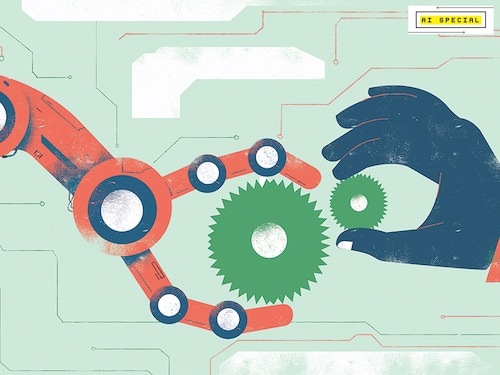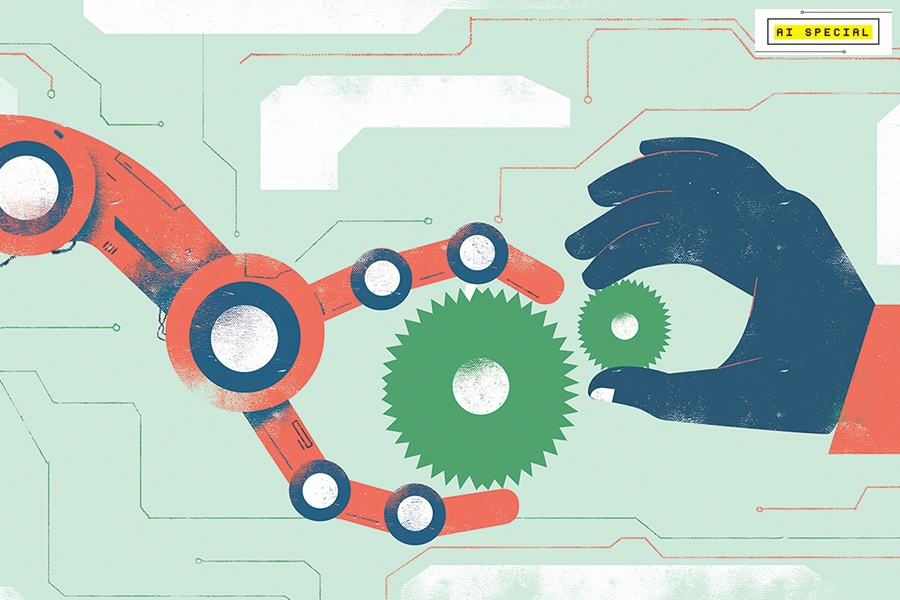Taking manufacturing from IOT to AIOT
In India, deep tech startups are just beginning to tackle specific problems of manufacturing, with the application of AI


 Illustration: Sameer Pawar
Illustration: Sameer Pawar
Manufacturing is an area where digitalisation is making deep inroads. Concepts such as ‘digital twins’ are becoming popular, helping companies make digital replicas of complex products and their manufacturing processes—this allows for faster and cheaper tests for potential problems in both the processes and the products.
In India, deep tech startups are just beginning to tackle specific problems of manufacturing, with the application of AI. One such startup is Vyuti Systems, where Gokul NA and Nikhil Ramaswamy are building an intelligent camera module—under their brand CynLr—that might eventually help manufacturers retrain robotic arms to be more flexible.
Computer vision is a relatively new area, the duo says, whereas the mechanical aspects of robotics are 150 years old. Intelligent camera systems can bring manufacturers closer to removing the limitation of locking in the arms to making specific products.
Unlike human workers who can go from one factory to another, make different product and retrain in a couple of weeks, “if you are a cell phone factory, you can’t even make a mouse," says Gokul.
This is despite the fact that robotic arms do the same kind of movements irrespective of the product. An AI-based computer vision module could be an important step closer to being able to use the same arms to make different products. This is because every task of the arm boils down to picking, orienting and placing, at the most basic level.
“However, for this to be done dynamically and not to be pre-programmed, for it to be able to understand different scenarios," the tech isn’t there yet, he says.
Another area where AI is being applied to factories is the field of connected networks of sensors—often referred to as Internet of Things (IoT). The next phase of the evolution of IoT is to infuse AI algorithms into it and this has given rise to the emerging field of AIoT.

Germany’s Robert Bosch Engineering and Business Solutions (RBEI) recently released its Phantom Edge AIoT platform, which combines the power of AI and IoT to provide a real-time view of electrical energy consumption, operating usage, electrical parameters, and appliance-level information.
Phantom Edge has potential applications in a number of industries like health care, retail, commercial spaces, agriculture, mobility, and industrial manufacturing. It uses non-intrusive sensors to collect power signatures and machine learning algorithms sitting on the edge, meaning the outer boundaries of networks, and analyses these signatures. This can be used to create digital twins of industrial equipment, for example, which will help in improving sustainability and productivity metrics.
It also provides inputs on critical safety parameters, machine maintenance and early warnings on malfunctions. Phantom Edge uses a 1.6GHz ARM Cortex processor, with 2GB of RAM and 8GB internal storage. The solution also comes with a cloud-based software application for real-time alerts and notifications.
First Published: Aug 09, 2021, 14:16
Subscribe Now